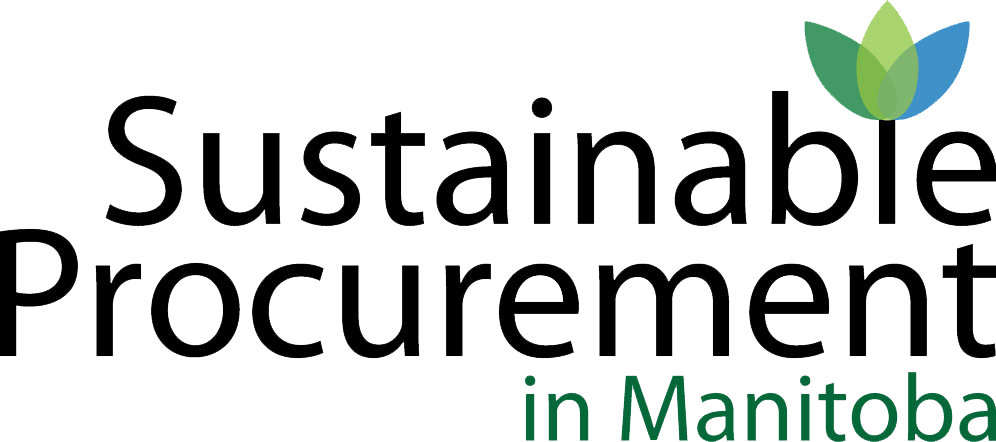You are here
Computers and Other Electronics
| Navigation: Minimum Sustainable Recommendations | What are the Issues? | What are the Options? |
Minimum Sustainable Recommendations
- Vendors must supply:
- Computers, displays, and imaging equipment that achieved Bronze registration or higher in the EPEAT (Electronic Product Environmental Assessment Tool) system.
- Televisions that achieved Bronze registration or higher in the EPEAT system. If EPEAT is not available (e.g. commercial sized TVs), request for ENERGY STAR certified and RoHS compliant equipment.
- Networking equipment that achieved Bronze registration or higher in the EPEAT systems and/or are ENERGY STAR and RoHS compliant.
- Product environmental attributes (e.g. Environmental Product Declaration, Eco Declaration) for products offered.
- The vendor must provide the service life of the product and calculate the carbon footprint based on the purchase quantity requested.
- In addition, Manitoba's electricity is a low-carbon source (hydroelectricity). Therefore, the vendor must provide the calculated carbon footprint excluding usage for the purchase quantity requested.
- Vendors must supply goods made from electronic manufacturers that are working towards a "conflict mineral free" supply chain. The Vendor must ask the manufacturer for its brand policy and proof of the manufacturer's involvement in programs aimed to establish a conflict-free supply chain of Tantalum, Tin, Tungsten and Gold (3T+G). The Vendor must provide the manufacturer's proof of involvement.
- The electronic equipment provided must be compatible with widely available assistive technologies and devices to ensure conformance with the Accessibility for Manitobans Act.
- The accessibility features of the electronic equipment provided must follow the seven principles of universal design (Equitable Use, Flexibility in Use, Simple and Intuitive Use, Perceptible Information, Tolerance for Error, Low Physical Effort and Size and Space for Approach and Use). http://universaldesign.ie/What-is-Universal-Design/The-7-Principles/
Other things to consider
In addition to the above:
- Consider requesting larger sized durable and efficient LCD monitors with the personal computers thus enabling employees to read directly off the screen, and reducing the need to print.
- Assess plans for implementing technology such as video conferencing, which will result in the need for additional specifications.
- Consider the issues associated with the eventual disposal of the equipment:
- Required specifications to enhance the recyclability and reduced toxicity of the electronic components;
- Comply with the Electronic Waste Product Stewardship Program developed by Manitoba Conservation and Manitoba Water Stewardship.
- Options for the re-use of computer equipment by non-profit organization(s).
- In keeping with provincial commitments to minimize greenhouse gas emissions and solid waste production, the vendor should be encouraged to develop sustainable delivery strategies:
- Product delivery consolidations
- Efficient logistics
- Proper route planning
- No idling of vehicles during product delivery
- Use of fuel efficient delivery vehicles
- Use re-usable blankets to protect items during shipping.
For a list of EPEAT registered products and to learn more about certification criteria, check out https://epeat.sourcemap.com/
Check out the ENERGY STAR “Simple Savings Calculator for Purchases”. This on-line calculator is designed to show purchasers the direct economic benefits of purchasing energy efficient products.
http://oee.nrcan.gc.ca/equipment/manufacturers/specifications/9016
What are the issues?
The long term environmental impacts associated with computer (and other electronics) manufacturing, use and disposal are well understood and publicized. Two of the most significant impacts usually discussed are:
- The amount of energy required to produce and operate the equipment,
- The quantity of carbon emissions associated with the equipment's lifecycle and;
- The quantity of heavy metals such a lead, mercury, cadmium, chromium and bromated fire retardants in the monitors and hard drives. These chemicals pose risks to production workers during manufacturing and to soil and water supplies, if computers are not disposed of using a licensed electronic waste recycling facility.
In addition to the impacts noted above, it may be important to address issues associated with manufacturers’ use of conflict minerals. Many of the electronic devices used every day — cell phones, computers and cameras — contain materials mentioned in discussions of conflict minerals (gold, tantalum, tin, tungsten etc). These materials are often extracted against a backdrop of human rights abuses and armed fighting.
What are the options?
In 2006, the European Union (EU), concerned about the environmental effects of electronics, imposed two directives on electronics manufacturers, known as the RoHS and WEEE Directives.
RoHS, (also known as Lead-Free), stands for Restriction of Hazardous Substances and is a Directive (2002/95/EC) that restricts the use of hazardous materials found in electrical and electronic products. Since July 2006, all applicable products sold in the EU market must pass RoHS compliance.
WEEE stands for Waste from Electrical and Electronic Equipment. WEEE Directive (2002/96/EC) mandates suppliers to set up facilities and finance the treatment, recovery and recycling of electric and electronic equipment. Since August of 2006, all applicable products sold in the EU market must pass WEEE compliance.
As a result of these directives and in order to continue selling in the EU market, many well-known companies have had to change their global electronic manufacturing processes. These directives have significantly reduced the environmental impacts associated with electronics and the industry is now forever changed.
In Canada, similar directives do not currently exist, however, purchasers can use their buying power to obtain the RoHS compliant equipment being offered by manufacturers to European customers and specifying energy efficient (eg. Energy Star) which is becoming the norm.
When purchasing computers, displays, imaging equipment and televisions, purchasing professionals have the option in North America to specify EPEAT certified products. EPEAT or “Electronic Product Environmental Assessment Tool” provides certification to a number of products. EPEAT rated products include, as a minimum, RoHS and ENERGY STAR compliance. For more information about EPEAT go to www.EPEAT.net.
Last Updated: November 2019
Theme by Danetsoft and Danang Probo Sayekti inspired by Maksimer
